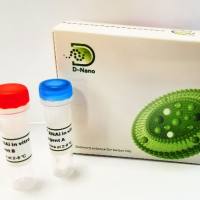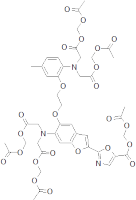In Vitro and In Vivo Apoptosis Detection Using Membrane Permeant Fluorescent-Labeled Inhibitors of Caspases
互联网
718
Apoptosis detection methodology is an ever evolving science. The caspase family of cysteine proteases plays a central role in this environmentally conserved mechanism of regulated cell death. New methods that allow for the improved detection and monitoring of the apoptosis-associated proteases are key for further advancement of our understanding of apoptosis-mediated disease states such as cancer and Alzheimer’s disease. From the use of membrane permeant fluorescent-labeled inhibitors of caspases (FLICA) probe technology, we have demonstrated their successful use as tools in the detection of apoptosis activity within the in vitro and in vivo research setting. In this chapter, we provide detailed methods for performing in vitro apoptosis detection assays in whole living cells, using flow cytometry, and 96-well fluorescence plate reader analysis methods. Furthermore, novel flow cytometry-based cytotoxicity assay methods, which incorporate the FLICA probe for early apoptosis detection, are described. Inclusion of this sensitive apoptosis detection probe component into the flow-based cytotoxicity assay format results in an extremely sensitive cytotoxicity detection mechanism. Lastly, in this chapter, we describe the use of the FLICA probe for the in vivo detection of tumor cell apoptosis in mice and rats. These early stage in vivo -type assays show great potential for whole animal apoptosis detection research.









